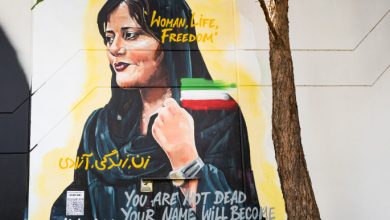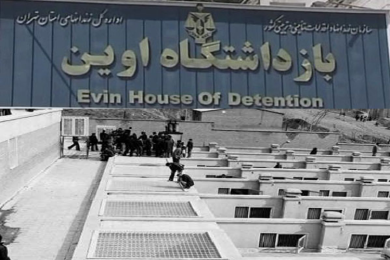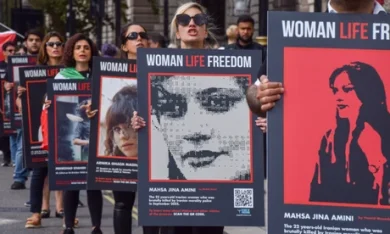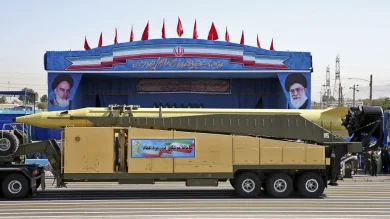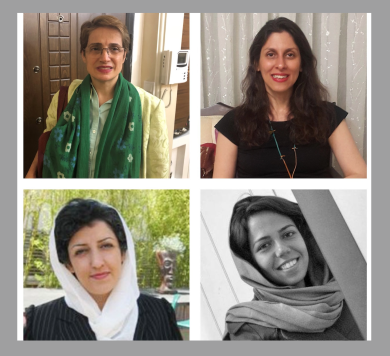In recent years, Iran has witnessed the emergence of a powerful and determined youth movement demanding freedom, equality, and justice. This new generation, shaped by economic hardship, social repression, and political disillusionment, is at the forefront of resistance against an entrenched authoritarian regime. The youth movement represents not just a call for reform but a broader demand for systemic change, rooted in a desire for democracy, human rights, and a brighter future.
This article explores the factors driving Iran’s youth movement, the strategies employed by this new generation, the challenges they face, and the global implications of their struggle.
The Rise of Iran’s Youth Movement
Iran’s youth population makes up a significant portion of the country, with over 60% of the population under the age of 35. This demographic reality places young Iranians at the heart of the nation’s social and political dynamics.
1. A Generation Shaped by Hardship
• Economic Struggles: Young Iranians face high unemployment rates, inflation, and a lack of opportunities, exacerbated by years of economic mismanagement and international sanctions. Despite being one of the most educated generations in Iran’s history, many young people find themselves unable to achieve financial stability or independence.
• Social Repression: The Iranian regime enforces strict social controls, limiting personal freedoms, particularly for women and minorities. The mandatory hijab law, restrictions on public behavior, and censorship of cultural expression are sources of constant frustration.
• Political Disillusionment: Decades of unfulfilled promises for reform and a lack of meaningful political representation have left many young Iranians disillusioned with the regime.
2. The Death of Mahsa Amini: A Turning Point
The death of Mahsa Amini in 2022 while in the custody of the morality police became a catalyst for the youth movement. Her death symbolized the regime’s systemic oppression, sparking nationwide protests led by young people under the rallying cry of “Women, Life, Freedom.”
3. Digital Connectivity
Unlike previous generations, Iran’s youth are highly connected to the outside world through the internet and social media. Despite censorship and restrictions, they use these platforms to organize protests, share information, and amplify their voices globally.
Key Characteristics of the Youth Movement
The youth movement in Iran is distinct in its organization, leadership, and goals, making it a formidable challenge to the regime.
1. Leaderless but Unified
• The movement is largely decentralized, with no single leader or organization. This makes it harder for the regime to dismantle and reflects the collective nature of the struggle.
• Unity is achieved through shared grievances, common demands, and the use of digital platforms to coordinate actions.
2. Inclusive and Intersectional
• The youth movement transcends traditional divides, bringing together people of different ethnicities, genders, and social classes. Women, in particular, play a central role, challenging patriarchal norms and systemic discrimination.
• Minority groups, such as Kurds and Balochs, have also been at the forefront, linking their struggles for cultural and political rights with the broader movement.
3. Focused on Systemic Change
• Unlike previous reformist movements, today’s youth are not content with small-scale reforms or concessions. They demand fundamental change, including greater political freedoms, the separation of religion and state, and an end to systemic corruption and oppression.
Strategies and Tactics
The youth movement employs innovative and courageous tactics to challenge the regime, despite facing severe repression.
1. Protests and Public Demonstrations
• Protests remain a central tactic, with young people taking to the streets to demand justice and freedom
These demonstrations are often sparked by specific incidents, such as Mahsa Amini’s death, but quickly evolve into broader calls for systemic change.
• Protesters use symbolic acts, such as burning headscarves or chanting slogans like “Death to the Dictator,” to challenge the regime’s authority.
2. Digital Activism
• Social media platforms like Instagram, Telegram, and Twitter are critical tools for organizing, documenting, and spreading the movement’s message.
• Activists use encrypted messaging apps to evade surveillance and coordinate actions, while hashtags like #MahsaAmini and #WomenLifeFreedom amplify their voices globally.
3. Cultural Resistance
• Music, art, and literature are powerful tools of resistance, allowing young Iranians to express dissent and envision an alternative future. Songs like Shervin Hajipour’s “Baraye” have become anthems of the movement.
4. Decentralized Networks
• The movement relies on grassroots networks and community organizing rather than formal leadership structures, making it more resilient to regime crackdowns.
Challenges Facing the Youth Movement
Despite its determination and creativity, the youth movement faces significant challenges that threaten to undermine its progress.
1. Brutal Repression
• The regime responds to protests with violence, using the IRGC, Basij paramilitary forces, and police to suppress dissent. Mass arrests, torture, and executions are common tactics to instill fear.
• Internet blackouts during protests disrupt communication and obscure the regime’s human rights abuses from international scrutiny.
2. Lack of Resources
• Many activists lack the financial and logistical resources needed to sustain long-term resistance, especially in the face of economic hardship and repression.
3. Global Attention Fatigue
• While the youth movement initially garners international attention, global focus often shifts away after the immediate crisis, leaving activists feeling abandoned.
4. Fragmentation
• Despite its unity on broad goals, the movement sometimes struggles with internal divisions over strategy, ideology, and priorities.
The Global Implications of Iran’s Youth Movement
The youth movement in Iran is not just a domestic issue; it has broader implications for regional and global politics.
1. A Challenge to Authoritarianism
• The youth movement represents a broader struggle against authoritarianism and oppression, inspiring similar movements in the region and beyond.
2. Regional Stability
• A successful youth movement in Iran could lead to significant political changes, potentially altering Iran’s foreign policy and reducing its destabilizing activities in the Middle East.
3. Human Rights and Democracy
• The movement underscores the universal desire for human rights and democracy, reminding the international community of its responsibility to support those fighting for these values.
How the World Can Support Iran’s Youth Movement
Global solidarity is essential to the success of Iran’s youth movement. The international community can play a vital role in supporting their struggle.
1. Amplifying Voices
• Media outlets and social media platforms must prioritize stories from Iranian activists and amplify their demands for change.
2. Providing Digital Tools
• Governments and NGOs can provide activists with VPNs, encrypted messaging apps, and other tools to bypass censorship and enhance digital security.
3. Targeted Sanctions
• Targeted sanctions on regime officials and entities responsible for human rights abuses can weaken the regime’s ability to suppress dissent.
4. Diplomatic Pressure
• International organizations and governments should pressure Iran to respect human rights and hold the regime accountable for its actions.
5. Supporting Refugees
• Countries should offer asylum and support to Iranian activists fleeing persecution, enabling them to continue their advocacy in safety.
Conclusion
Iran’s youth movement is a powerful force for change, driven by a generation that refuses to accept oppression and injustice. Their courage, creativity, and resilience offer hope not only for Iran but for the broader fight for human rights and democracy. The international community must stand in solidarity with these young activists, providing the support and amplification they need to achieve their vision of a freer and more just society. The future of Iran belongs to its youth, and their struggle deserves the world’s unwavering attention and support.
Join Our Newsletter!
Stay informed with the latest updates, news, and ways to take action in the fight for justice and global security. Sign up now to get updates delivered straight to your inbox!

